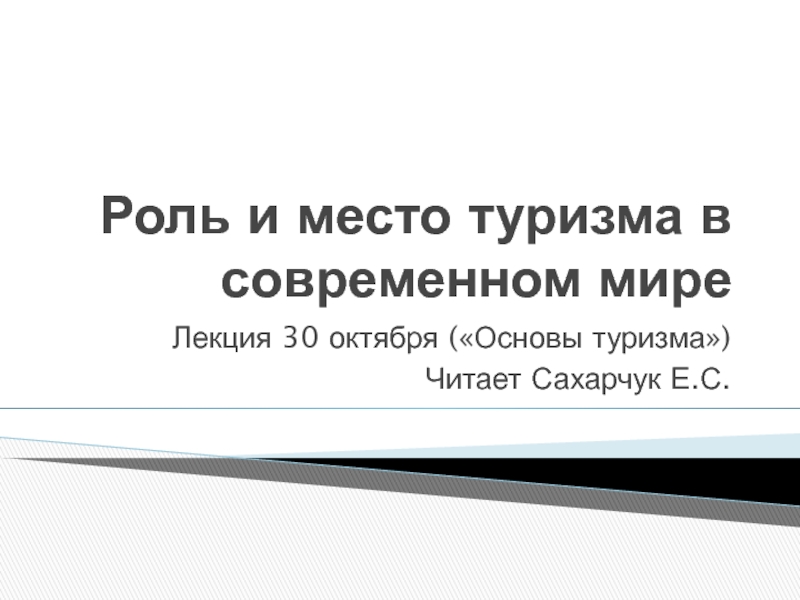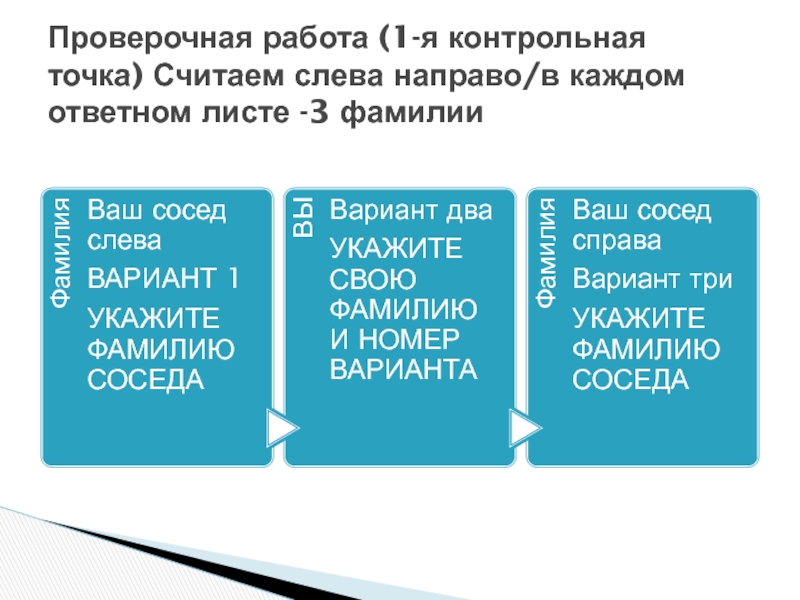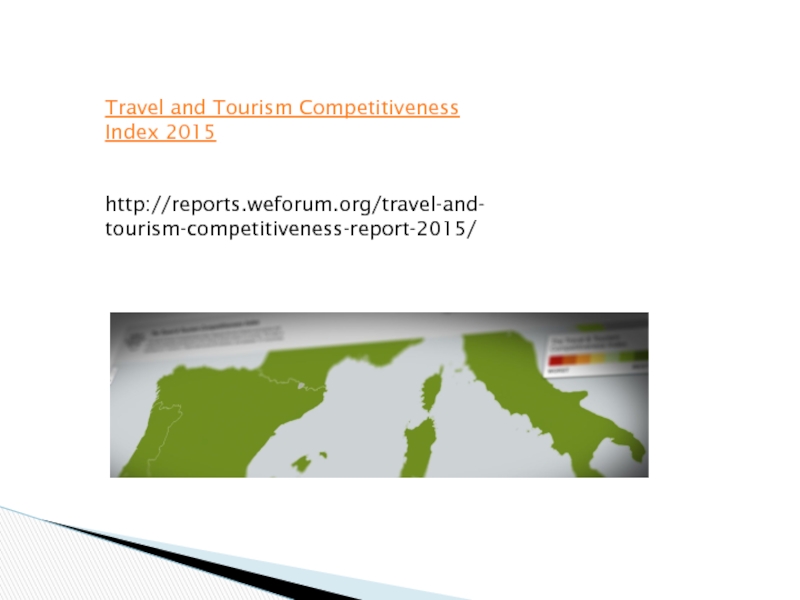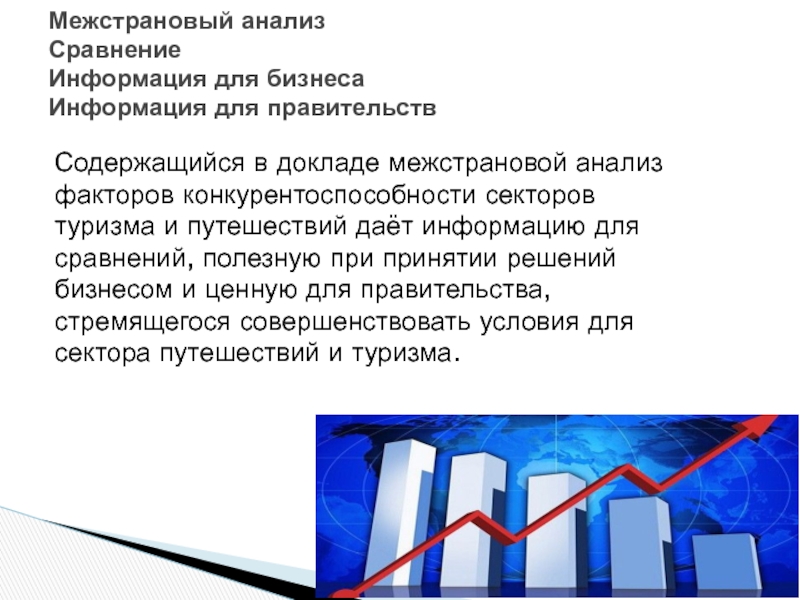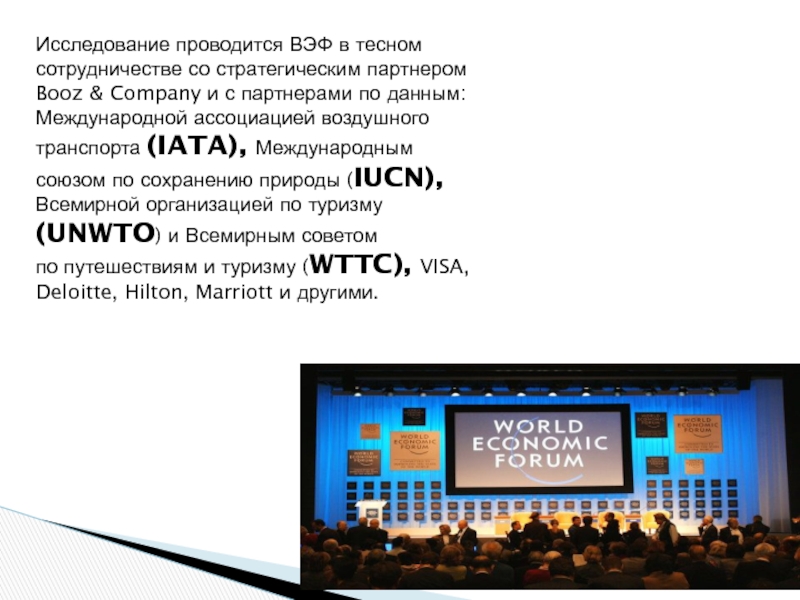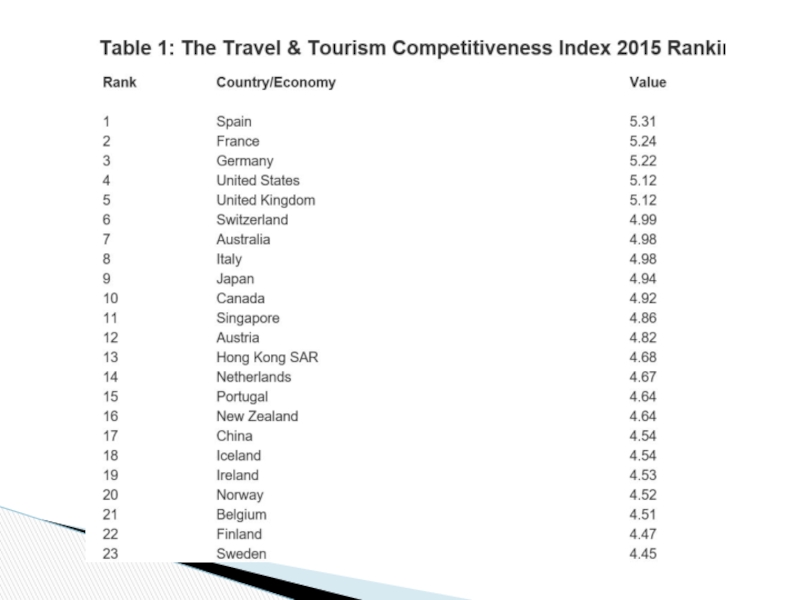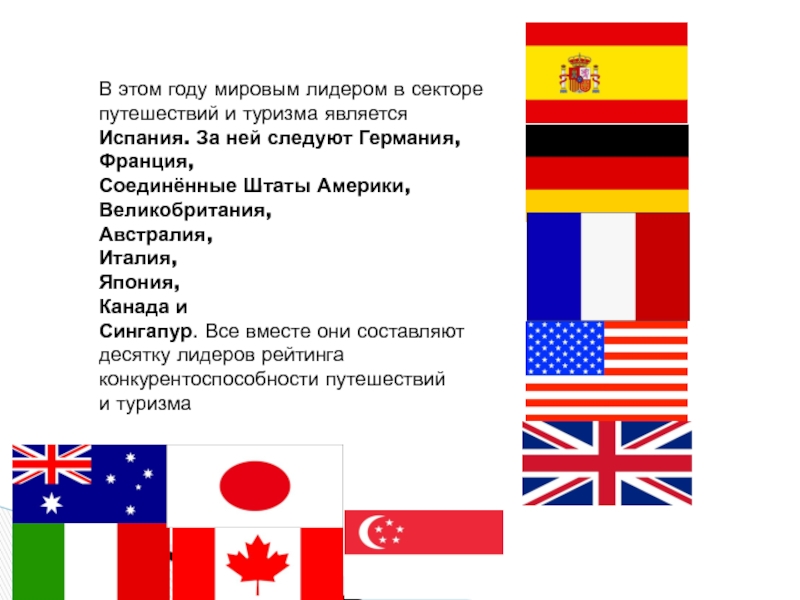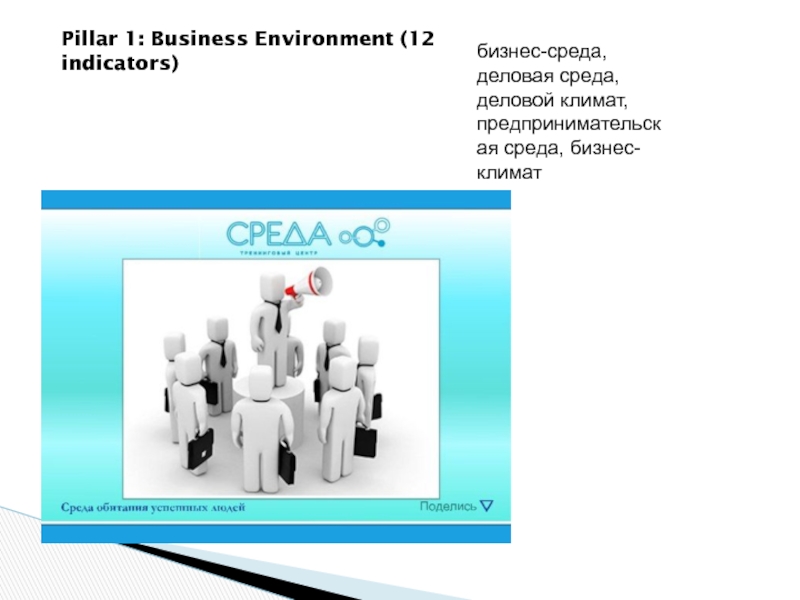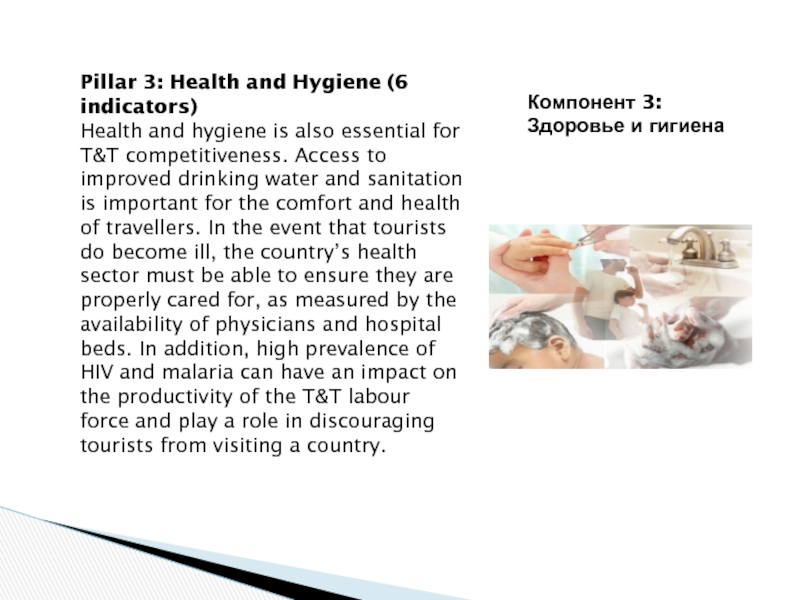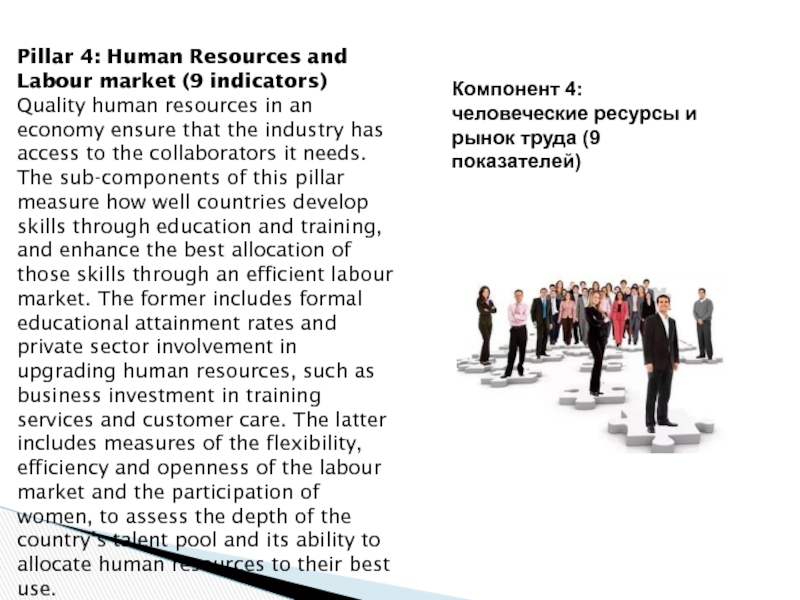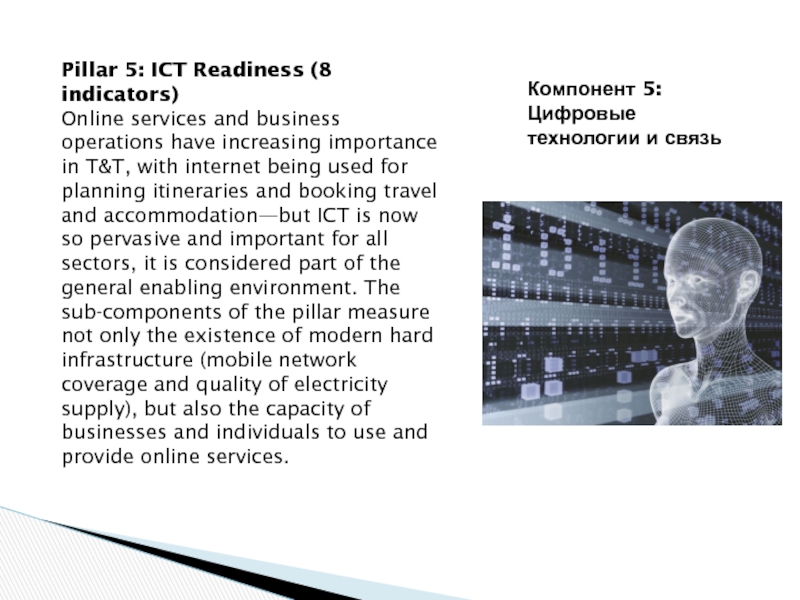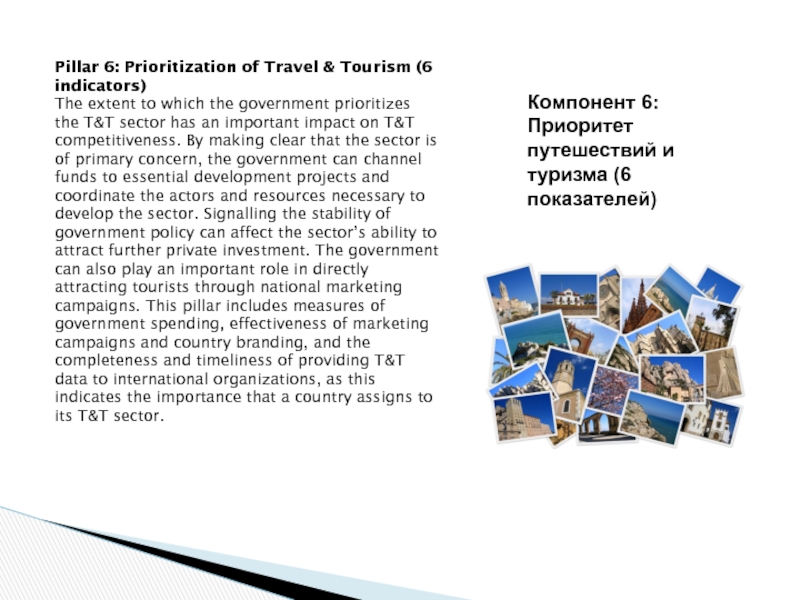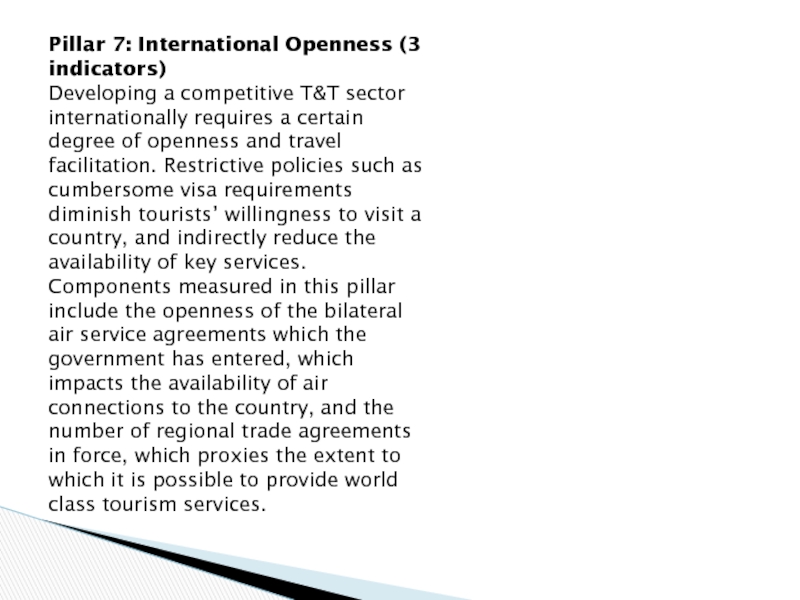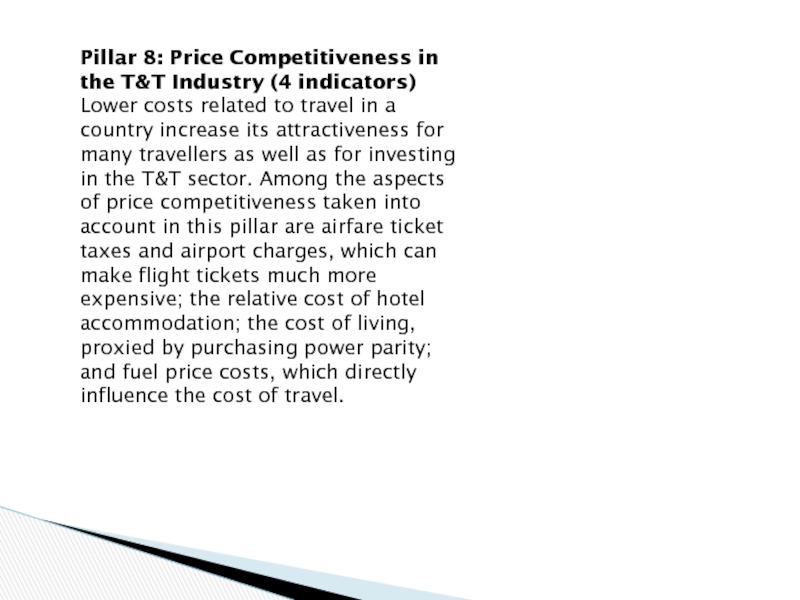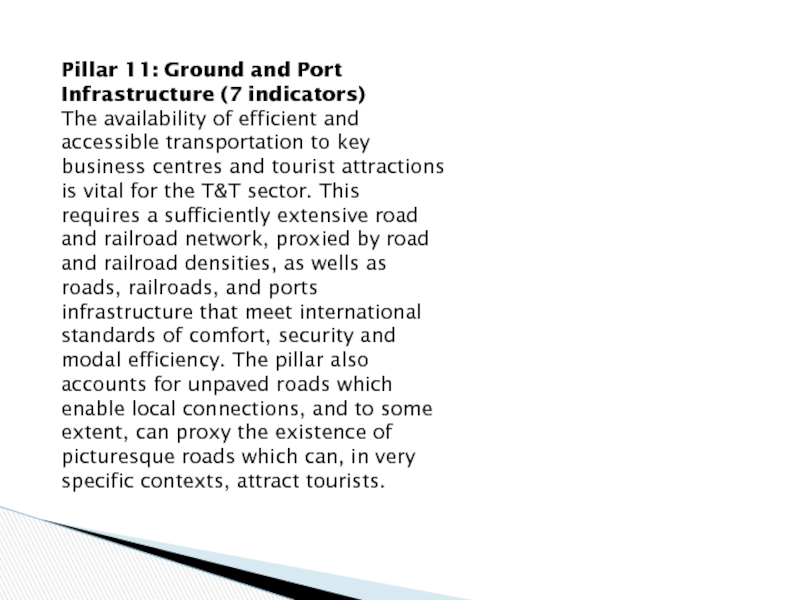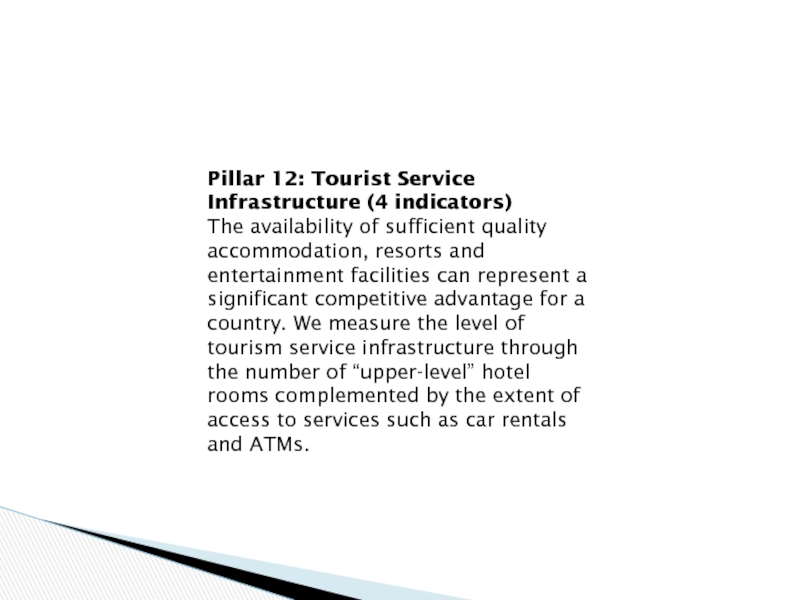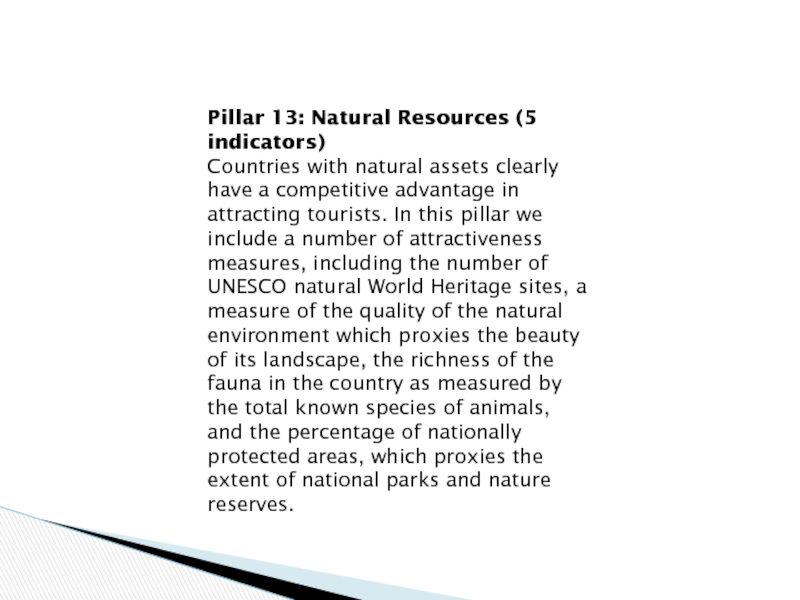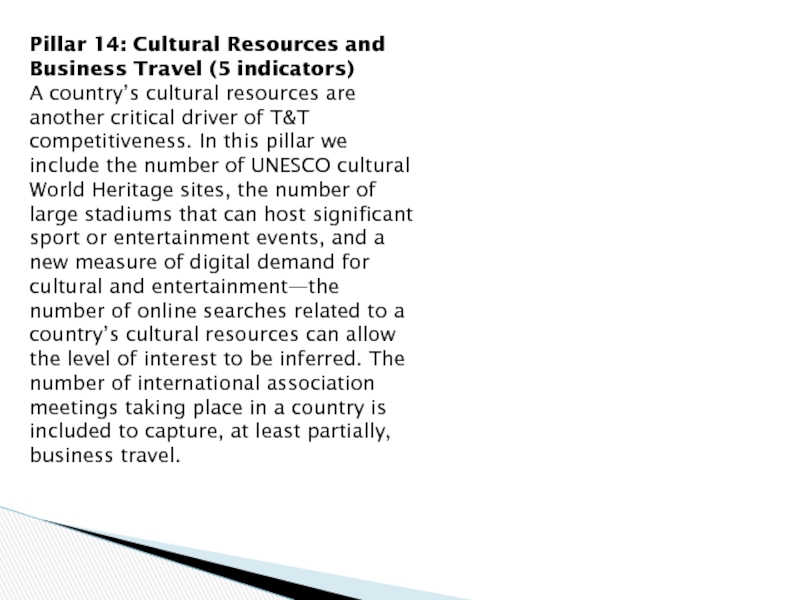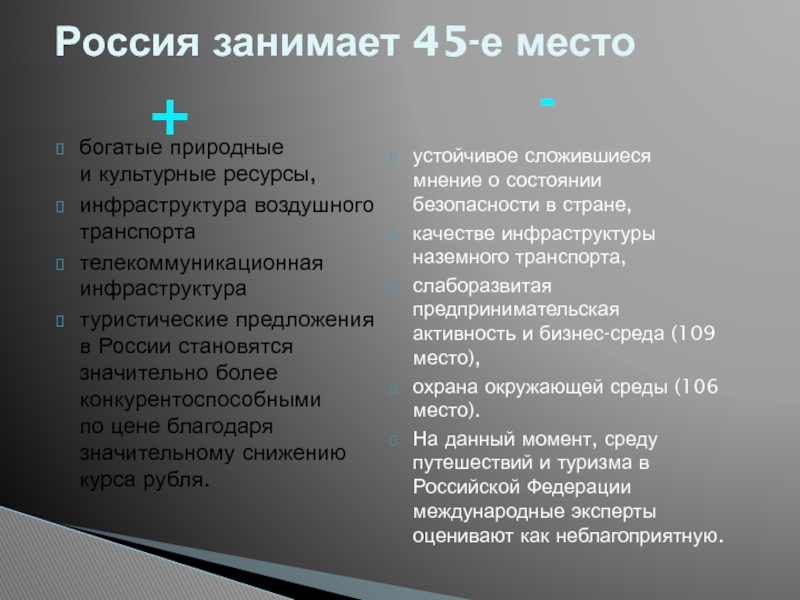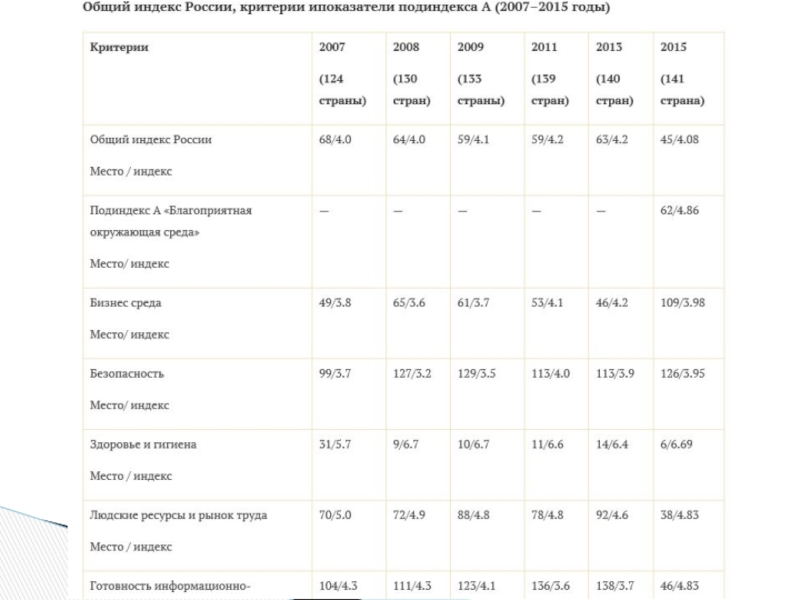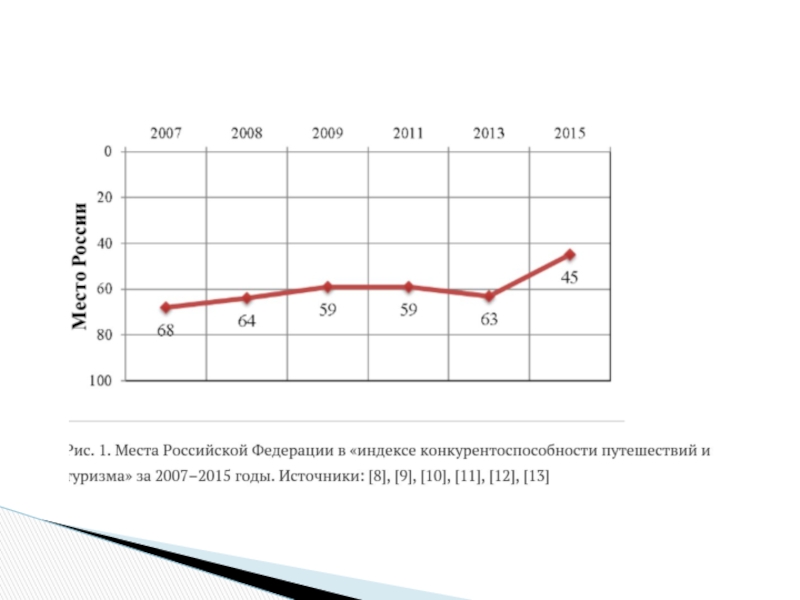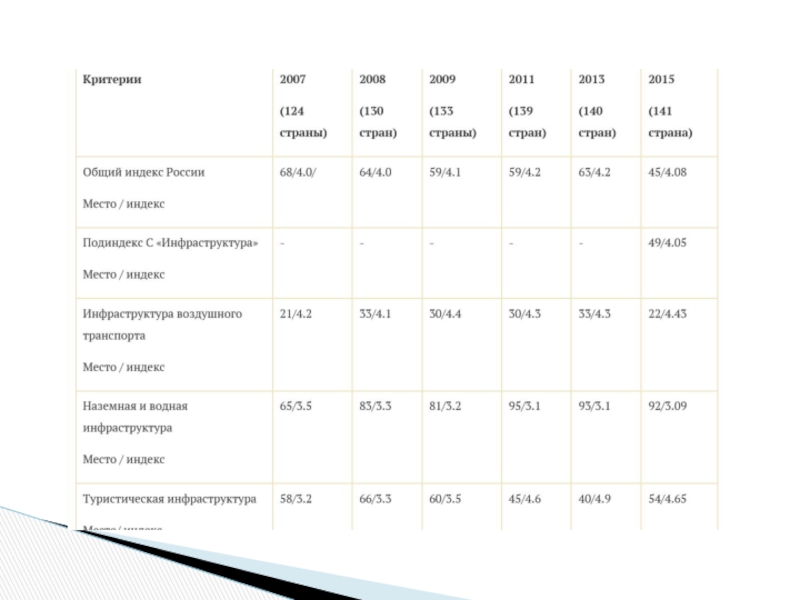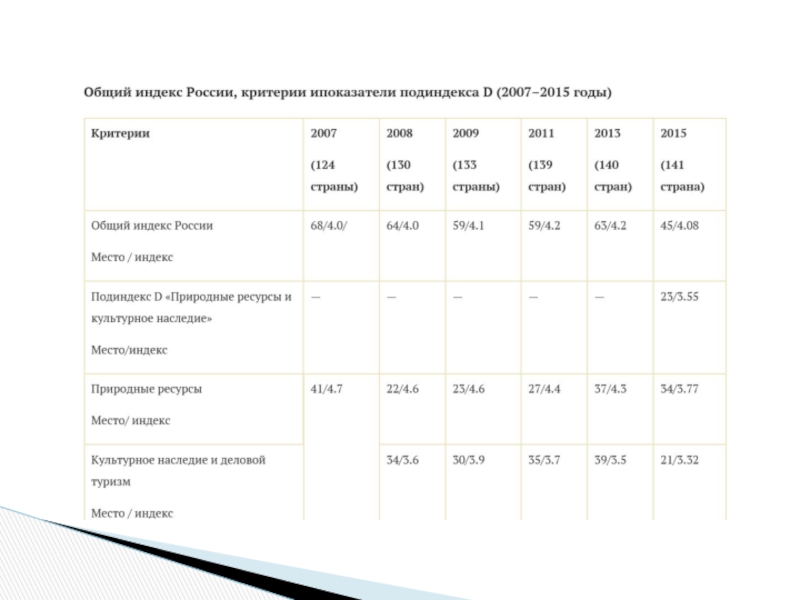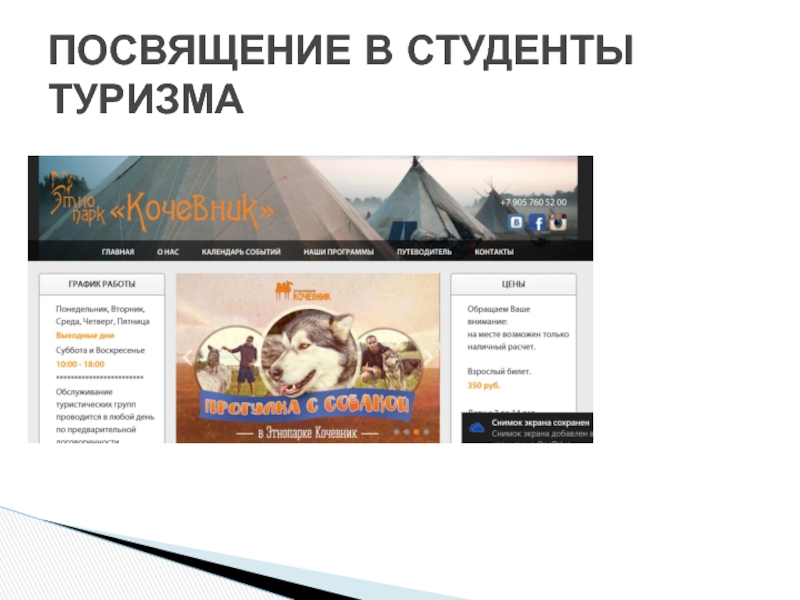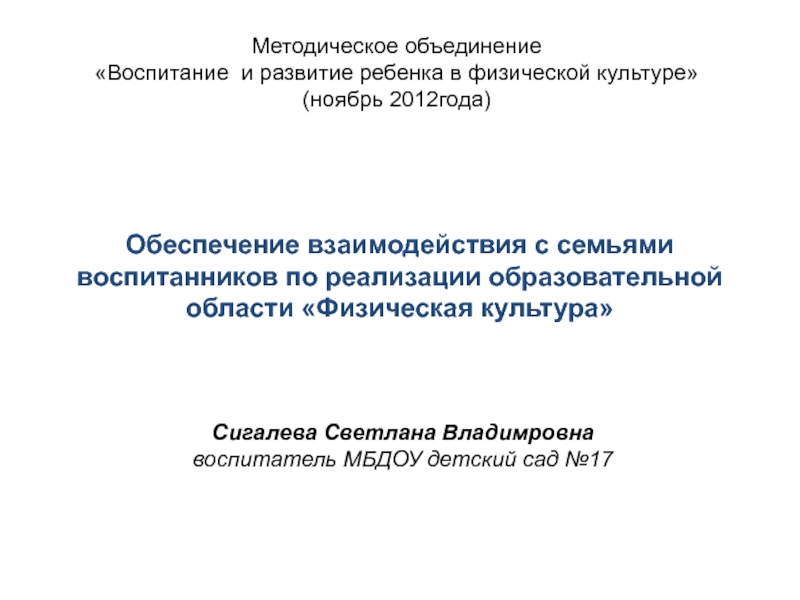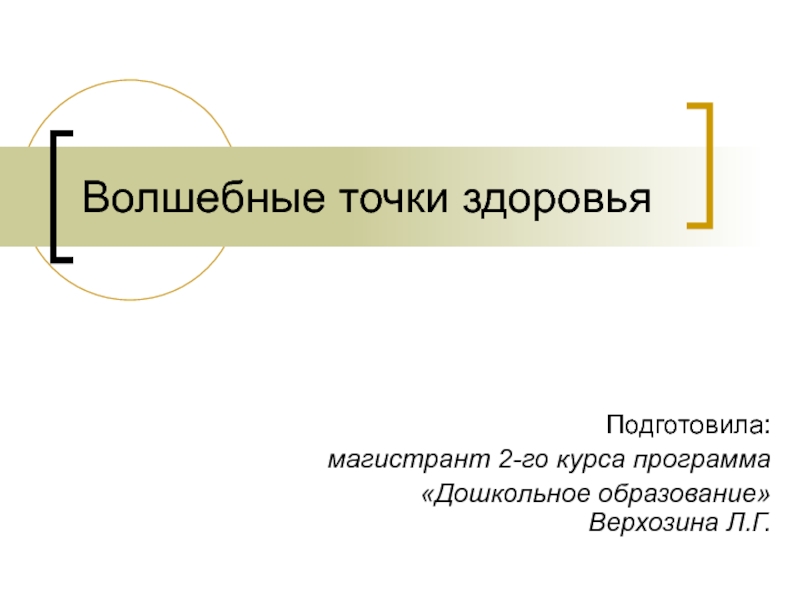- Главная
- Разное
- Дизайн
- Бизнес и предпринимательство
- Аналитика
- Образование
- Развлечения
- Красота и здоровье
- Финансы
- Государство
- Путешествия
- Спорт
- Недвижимость
- Армия
- Графика
- Культурология
- Еда и кулинария
- Лингвистика
- Английский язык
- Астрономия
- Алгебра
- Биология
- География
- Детские презентации
- Информатика
- История
- Литература
- Маркетинг
- Математика
- Медицина
- Менеджмент
- Музыка
- МХК
- Немецкий язык
- ОБЖ
- Обществознание
- Окружающий мир
- Педагогика
- Русский язык
- Технология
- Физика
- Философия
- Химия
- Шаблоны, картинки для презентаций
- Экология
- Экономика
- Юриспруденция
Роль и место туризма в современном мире презентация
Содержание
- 1. Роль и место туризма в современном мире
- 2. Проверочная работа (1-я контрольная точка) Считаем слева направо/в каждом ответном листе -3 фамилии
- 3. Рейтингование в туризме Индекс конкурентоспособности сектора путешествий
- 4. Travel and Tourism Competitiveness Index 2015 http://reports.weforum.org/travel-and-tourism-competitiveness-report-2015/
- 5. Содержащийся в докладе межстрановой анализ факторов конкурентоспособности секторов
- 6. Исследование проводится ВЭФ в тесном сотрудничестве со стратегическим партнером
- 8. В этом году мировым лидером в секторе путешествий и туризма
- 9. Pillar 1: Business Environment (12 indicators) бизнес-среда, деловая среда, деловой климат, предпринимательская среда, бизнес-климат
- 10. Pillar 2: Safety and Security (5 indicators)
- 11. Pillar 3: Health and Hygiene (6 indicators)
- 12. Pillar 4: Human Resources and Labour market
- 13. Pillar 5: ICT Readiness (8 indicators) Online
- 14. Pillar 6: Prioritization of Travel & Tourism
- 15. Pillar 7: International Openness (3 indicators) Developing
- 16. Pillar 8: Price Competitiveness in the T&T
- 17. Pillar 9: Environmental Sustainability (10 indicators) The
- 18. Pillar 10: Air Transport Infrastructure (6 indicators)
- 19. Pillar 11: Ground and Port Infrastructure (7
- 20. Pillar 12: Tourist Service Infrastructure (4 indicators)
- 21. Pillar 13: Natural Resources (5 indicators) Countries
- 22. Pillar 14: Cultural Resources and Business Travel
- 23. богатые природные и культурные ресурсы, инфраструктура воздушного транспорта
- 28. ПОСВЯЩЕНИЕ В СТУДЕНТЫ ТУРИЗМА
Слайд 1Роль и место туризма в современном мире
Лекция 30 октября («Основы туризма»)
Читает
Слайд 2Проверочная работа (1-я контрольная точка) Считаем слева направо/в каждом ответном листе
Слайд 3Рейтингование в туризме
Индекс конкурентоспособности сектора путешествий и туризма составляется каждые два года
При его подготовке используется комбинация данных из общедоступных источников и информации от международных организаций и экспертов в области путешествий и туризма.
Слайд 4Travel and Tourism Competitiveness Index 2015
http://reports.weforum.org/travel-and-tourism-competitiveness-report-2015/
Слайд 5Содержащийся в докладе межстрановой анализ факторов конкурентоспособности секторов туризма и путешествий даёт информацию
Межстрановый анализ
Сравнение
Информация для бизнеса
Информация для правительств
Слайд 6Исследование проводится ВЭФ в тесном сотрудничестве со стратегическим партнером Booz & Company и с партнерами
Слайд 8В этом году мировым лидером в секторе путешествий и туризма является Испания. За ней следуют
Франция,
Соединённые Штаты Америки, Великобритания,
Австралия,
Италия,
Япония,
Канада и
Сингапур. Все вместе они составляют десятку лидеров рейтинга конкурентоспособности путешествий и туризма
Слайд 9Pillar 1: Business Environment (12 indicators)
бизнес-среда, деловая среда, деловой климат, предпринимательская
Слайд 10Pillar 2: Safety and Security (5 indicators) Safety and security is a
Компонент 2: Охрана и безопасность (5 показателей)
Слайд 11Pillar 3: Health and Hygiene (6 indicators) Health and hygiene is also
Компонент 3: Здоровье и гигиена
Слайд 12Pillar 4: Human Resources and Labour market (9 indicators) Quality human resources
Компонент 4: человеческие ресурсы и рынок труда (9 показателей)
Слайд 13Pillar 5: ICT Readiness (8 indicators) Online services and business operations have
Компонент 5:
Цифровые
технологии и связь
Слайд 14Pillar 6: Prioritization of Travel & Tourism (6 indicators) The extent to
Компонент 6: Приоритет путешествий и туризма (6 показателей)
Слайд 15Pillar 7: International Openness (3 indicators) Developing a competitive T&T sector internationally
Слайд 16Pillar 8: Price Competitiveness in the T&T Industry (4 indicators) Lower costs
Слайд 17Pillar 9: Environmental Sustainability (10 indicators) The importance of the natural environment
Слайд 18Pillar 10: Air Transport Infrastructure (6 indicators) Air connectivity is essential for
Слайд 19Pillar 11: Ground and Port Infrastructure (7 indicators) The availability of efficient
Слайд 20Pillar 12: Tourist Service Infrastructure (4 indicators) The availability of sufficient quality
Слайд 21Pillar 13: Natural Resources (5 indicators) Countries with natural assets clearly have
Слайд 22Pillar 14: Cultural Resources and Business Travel (5 indicators) A country’s cultural
Слайд 23богатые природные и культурные ресурсы,
инфраструктура воздушного транспорта
телекоммуникационная инфраструктура
туристические предложения в России становятся значительно
устойчивое сложившиеся мнение о состоянии безопасности в стране,
качестве инфраструктуры наземного транспорта,
слаборазвитая предпринимательская активность и бизнес-среда (109 место),
охрана окружающей среды (106 место).
На данный момент, среду путешествий и туризма в Российской Федерации международные эксперты оценивают как неблагоприятную.
Россия занимает 45-е место
+
-
